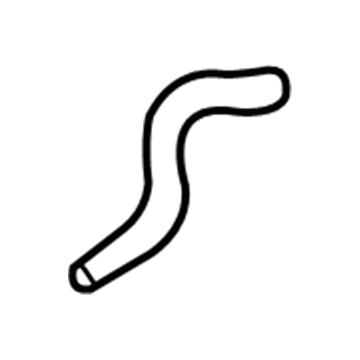
My Garage
My Account
Cart
Genuine Saturn LS1 PCV Valve Hose
Positive Crankcase Ventilation Valve Hose- Select Vehicle by Model
- Select Vehicle by VIN
Select Vehicle by Model
orMake
Model
Year
Select Vehicle by VIN
For the most accurate results, select vehicle by your VIN (Vehicle Identification Number).
1 PCV Valve Hose found
Saturn LS1 PCV Valve Hose
Each OEM Saturn LS1 PCV Valve Hose we offer is competitively priced and comes with the assurance of the manufacturer's warranty for the part. Furthermore, we guarantee the speedy delivery of your orders right to your doorstep. Our hassle-free return policy is also in place for your peace of mind.
Saturn LS1 PCV Valve Hose Parts Questions & Experts Answers
- Q: How Does the Positive Crankcase Ventilation System Work and PCV Valve Hose and What Are the Symptoms and Steps for Maintenance or Replacement on Saturn LS1?A:The Positive Crankcase Ventilation (PCV) system has a very important function of minimizing hydrocarbon emission through venting of crankcase emissions laden with unburned hydrocarbons. On four-cylinder models it is made of a single hose going from the valve cover to the air intake duct and small casing located beneath the valve cover with blow-by vapors from the crankcase entering internal passages of the vent housing directing them to the intake duct and then into the combustion chambers. V6 has an engine vent adapter on the intake manifold, a vent housing at the rear cylinder head as well as two hoses which help transmit fresh air as well as crankcase fumes. A bad PCV system has the potential to harm the engine parts, due to which hoses should be checked for cracks or obstruction and need to be replaced if required. A plugged hose may make rough, stalling or leaking or show signs of oil leakage while a leaking hose will have the same symptoms, but with high idle speeds. A functional check is done by removing the other end of the PCV hose, cranking the engine, and checking for the vacuum. Should excessive crankcase pressure be suspected, it should be boiled to check by a professional. For the case of component replacement, detachable PCV hose may be used by unscrewing clamps, though the vent housing on Four cylinder vehicles is part of the valve cover and cannot be replaced. Housing of vent is disengaged from body in V6 models but several of its connections need to be undone and proper attention paid when reconnecting it with a new gasket and mounting it securely.









